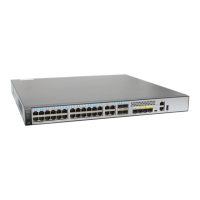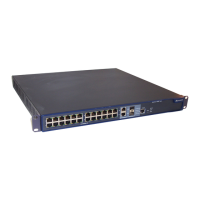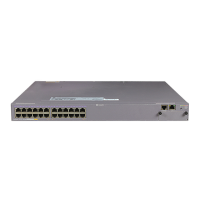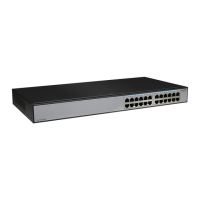Command Manual – Multicast Protocol
Quidway S8500 Series Routing Switches Chapter 5 PIM Configuration Commands
Huawei Technologies Proprietary
5-4
Example
# Configure the switch to advertise itself as a C-RP in the PIM domain to BSR. The
standard access list 2000 defines the groups related to the RP. The address of C-RP is
designated as the IP address of VLAN-interface10.
<Quidway> system-view
System View: return to User View with Ctrl+Z.
[Quidway] acl number 2000
[Quidway-acl-basic-2000] rule permit source 225.0.0.0 0.255.255.255
[Quidway-acl-basic-2000]quit
[Quidway] multicast routing-enable
[Quidway] pim
[Quidway-pim] c-rp vlan-interface 10 group-policy 2000
5.1.4 crp-policy
Syntax
crp-policy acl-number
undo crp-policy
View
PIM view
Parameter
acl-number: ACL number imported in C-RP filtering policy, ranging from 3000 to 3999.
Description
Use the crp-policy command to limit the range of legal C-RP, as well as target service
group range of each C-RP, and prevent C-RP proofing.
Use the undo crp-policy command to restore the default setting, that is, no range limit
is set and all received messages are taken as legal.
In the PIM SM network using BSR mechanism, every router can set itself as C-RP
(candidate rendezvous point) servicing particular groups. If elected, a C-RP becomes
the RP servicing the current group.
In BSR mechanism, a C-RP router unicasts C-RP messages to the BSR, which then
propagates the C-RP messages among the network by BSR message.
To prevent C-RP spoofing, you need to configure crp-policy on the BSR to limit legal
C-RP range and their service group range. Since each C-BSR has the chance to
become BSR, you must configure the same filtering policy on each C-BSR router.
This command uses the ACLs numbered between 3000 and 3999. The source
parameter in the rule command is translated as C-RP address in the crp-policy

